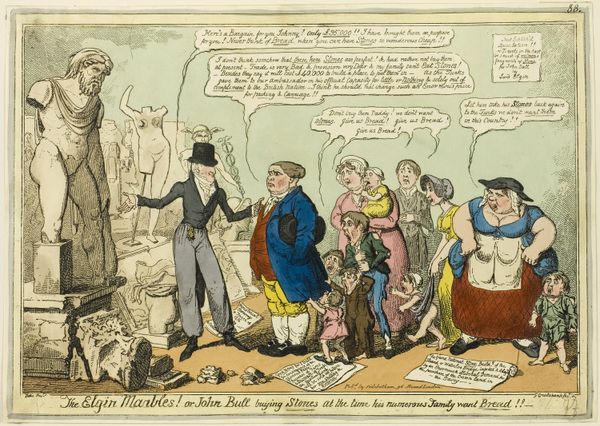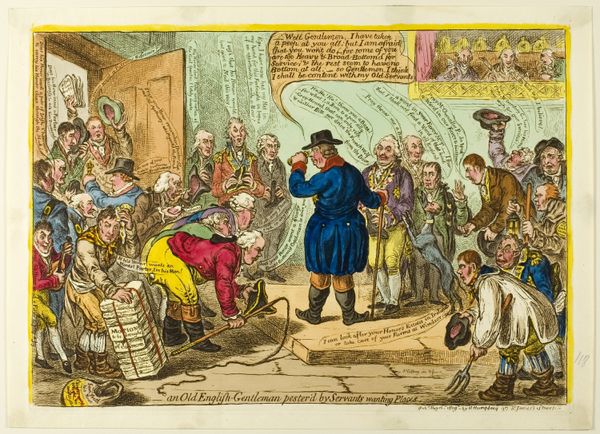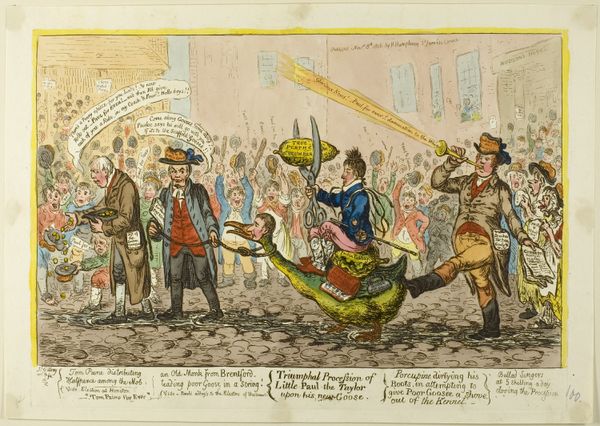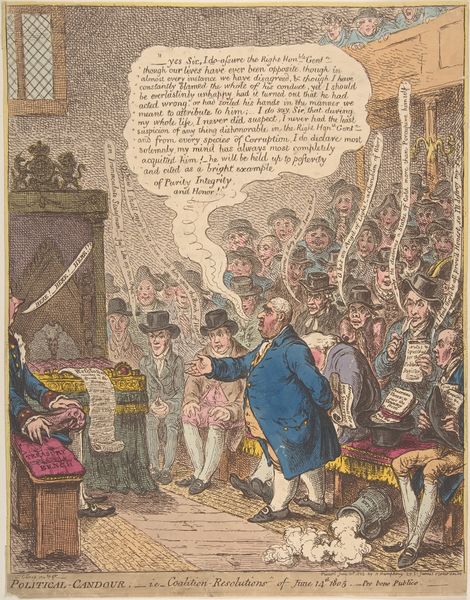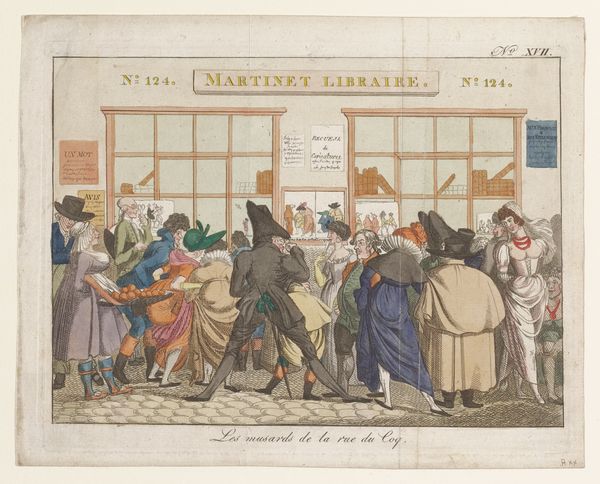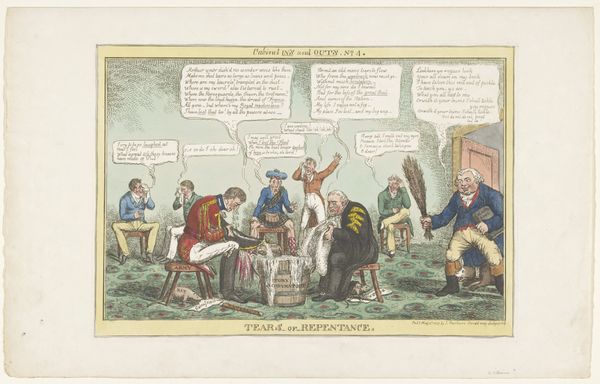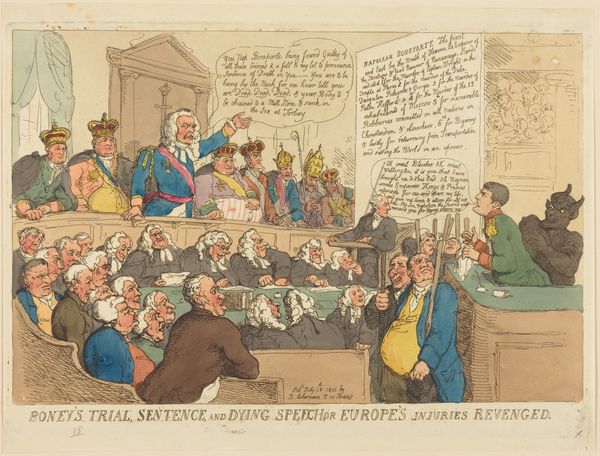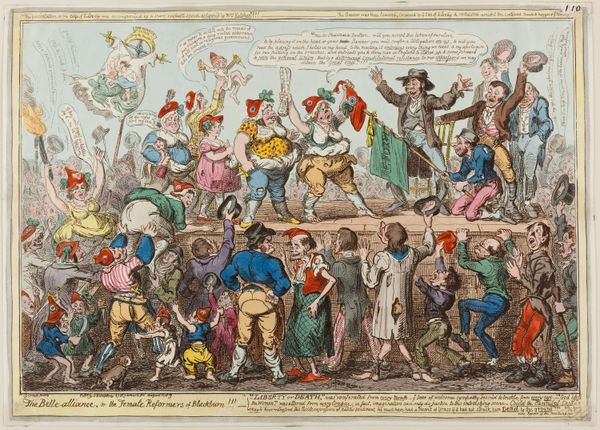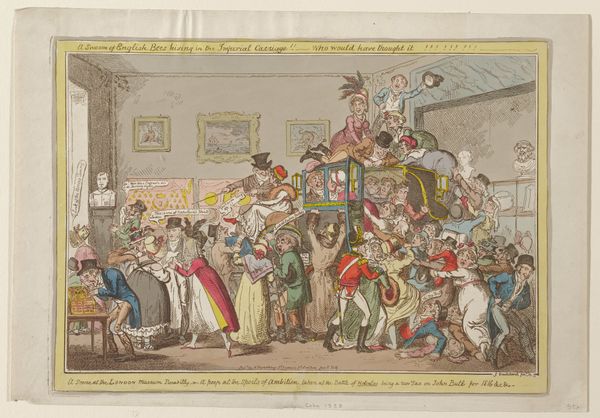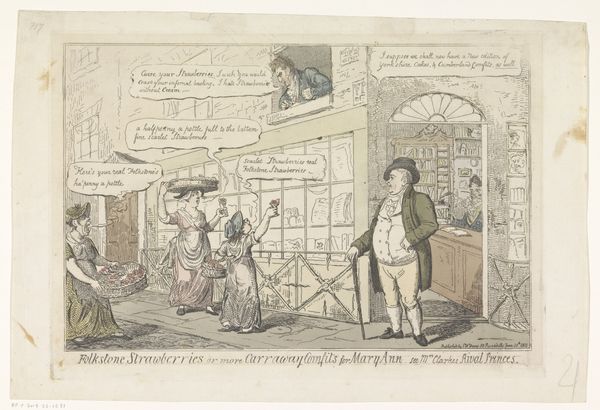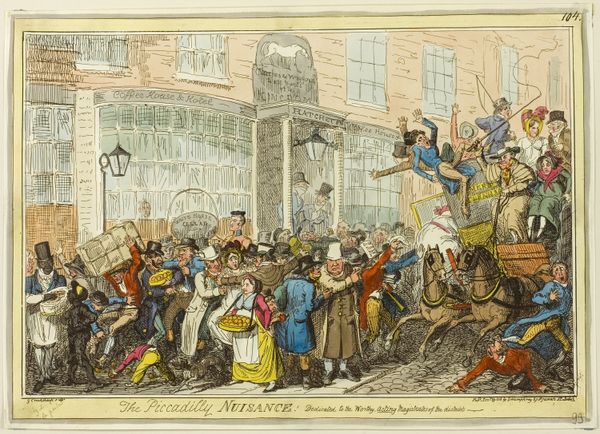
The Spafields Orator Hunt-ing for Popularity to Do-good!!! c. 1817
0:00
0:00
drawing, graphic-art, print, etching, paper
#
drawing
#
graphic-art
#
narrative-art
# print
#
etching
#
caricature
#
paper
#
romanticism
Dimensions: 230 × 343 mm (image); 247 × 350 mm (plate); 261 × 432 mm (sheet)
Copyright: Public Domain
Editor: This etching by George Cruikshank, titled "The Spafields Orator Hunt-ing for Popularity to Do-good!!!," dates to around 1817. The scene feels chaotic, crowded with figures, and clearly satirical. What do you see in this piece, especially considering the period in which it was made? Curator: I see a scathing critique of early 19th-century British politics and social unrest. Cruikshank, through caricature, is likely targeting Henry Hunt, a radical orator, and the Spa Fields riots. Consider the context: post-Napoleonic Wars, economic depression, widespread poverty. These conditions fueled popular discontent, which Hunt and others capitalized on. Ask yourself, who benefits when those at the margins mobilize? Are those who stand to gain necessarily allies of the oppressed? Editor: So, the "hunting" in the title isn’t literal. It's Hunt pursuing popularity? Curator: Exactly. Think about the visual cues: the exaggerated features, the frenzied crowd, the mock-heroic title. Cruikshank suggests that Hunt is less interested in genuine social reform and more in self-aggrandizement, perhaps even inciting further unrest for his own benefit. Are the masses following Hunt's agenda, or is Hunt appropriating the popular will to consolidate his personal power? Editor: It makes you wonder about the motivations behind these movements and who they truly serve. Curator: Precisely. And Cruikshank challenges us to look critically at these figures. It is relevant even today as an important commentary on performative activism. We can use these historical cues to further examine more modern social movements. It is a stark reminder to stay grounded in a philosophical approach to political upheaval, always asking about the real change, if any. Editor: This definitely gives me a lot to think about and helps me understand the work on a deeper, more historical level. Curator: Indeed, and remember to continually analyze how art both reflects and shapes socio-political dialogues.
Comments
No comments
Be the first to comment and join the conversation on the ultimate creative platform.
